The Little Yellow Cub
Memories of the J-3 Cub.
There was a time during my childhood the name “Piper Cub” was pretty much synonymous with the word “airplane.” In those days, a young boy might see a C-124 passing overhead whereupon he would exclaim, “Look, a Piper Cub!”
Although I began flying in the age of Cessna, rental Cubs were still available for very reasonable hourly rates. For that reason, I have many happy hours in the cockpit of J-3s. While “efficient” Wichita “spam cans,” had steering wheels, side by side seating, radios and a better than 15 knot increase in cruise airspeed over the Cub, they had no soul.
There was something about that time one of the mechanics drilled out a row of rivets to see the unsupported 150 empennage twist over to one side and fall on the ground. Something about sitting on the aircraft center-line with a joystick in one's hand – instead of a steering wheel. Something about dope and taut fabric versus drumming aluminum.
For me the J-3 was hot, dusty, Texas afternoons, with preflights being performed in the shade of an open T-hanger. Auto gas for fuel - without an STC. Grass strips with grass burnt from lack of rain. Racing alongside trains crossing the prairie, while ducking under power lines. Watching cars race ahead of me on the freeways below. Landing almost vertically in a small gale after wondering for many tense moments if there would be enough fuel to make it back to the field in plain sight.
So tell me grasshopper, what is the sound of one hand propping? Standing in front of the wing strut, beside the open doors, reaching in to work the throttle while hand propping from behind with one hand because there was no tail tie-down. I once found a loose exhaust manifold because a couple of the brass nuts had worked loose and fallen off the C-65's cylinder heads, leaving the exhaust manifold rattling loosely from the cylinder studs.
Alarmed, I went back to the house and explained to Mac that the aircraft wasn't airworthy, hoping he would fix it in time for me to get in an evening flight. Mac looked at me and said, “Why not? Go ahead and fly it, everything will be fine. I'll fix it tomorrow.” Puzzled, I went back and took off. Sure enough, the Cub flew just fine with the exhaust blowing past the manifold, straight out of the cylinder heads. Sure, I know about the potential issues involved, but luckily the Cub didn't know anything about such problems.
The odd step, turned 45 degrees, that did not improve entry into the cockpit. Standing on the brakes only to find they weren't strong enough to restrain the aircraft during run-up. The bent-wire gas gauge on a float adopted from Briggs and Stratton. The art of the three-point landing the Cub taught so well. Flying with the doors open. The bottom door's luffing, signaling the stall of a three point landing.
The time we got a ride in the Goodyear blimp (turn the control wheel and say three hail Marys while waiting for a response). After our ride, the Goodyear pilots wanted to fly a J-3 with its smokin' hot control response. So we went to a small strip just behind the international airport and went Cub flying. It was the sunset of classic aviation. So many memories, some of the best of my flying career.
Here is Minicraft's version of the J-3. This very basic kit is not for beginners wishing to make a scale representation of the Cub. There are no holes, or even marking positions, for anything, so one must do their research if they want to put things in the right places. Having intimate memories of the aircraft was a real plus. However, even then I had to go back and research various locations of items that had to be scratch built.
Then there is the cowling. Why Minicraft decided to mold it with halves running in the vertical plane is a mystery as it is almost impossible to properly assemble the engine and cowling together. The answer was to glue the cowling halves together and then cut them on the horizontal plane as was the real aircraft cowling. After that, engine assembly is simple. The cylinder cooling scoops were the wrong shape, so new ones had to be constructed out of led foil.
Details are minimal, but at least there were seats and joysticks. I added a scratch-built fuel tank under the instrument panel, along with a mag-switch, throttles etc. The doors are molded closed with no provision for opening them. Opening the doors was a micorsaw challenge. Then upper and lower doors had to be had to be scratch built, as the kit plastic was far to thick to reuse the cut out pieces.
This was one of those nightmare builds with everything seeming to go wrong. I spent quite a bit of time re-gluing and repainted various mistakes. There was a time when I would have flown a kit like this into the trashcan over some minor snafu, but that was back when I was a perfectionist. In time I learned to press on. This has resulted in my learning and developing many techniques for correcting mistakes I once considered impossible to correct.
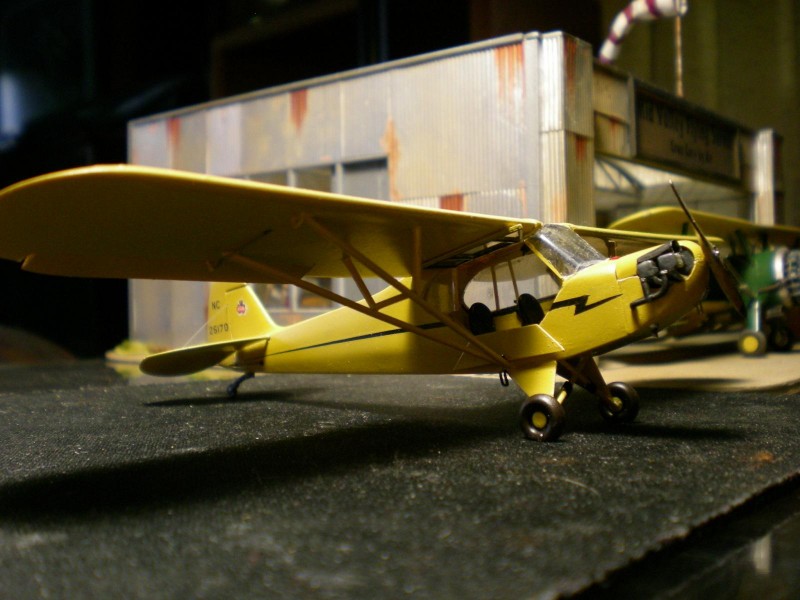
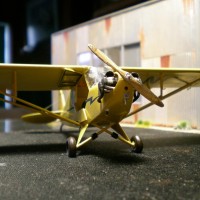
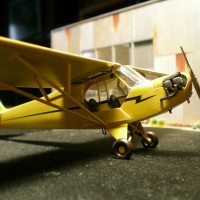
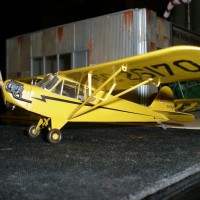


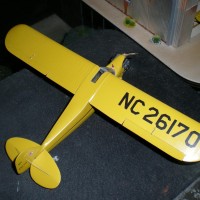

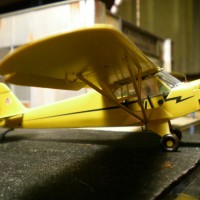
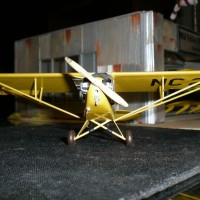
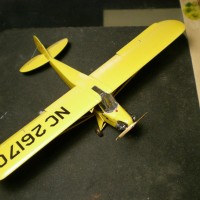
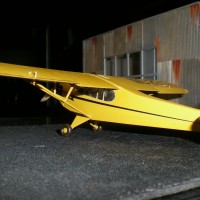
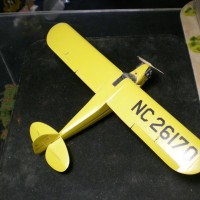
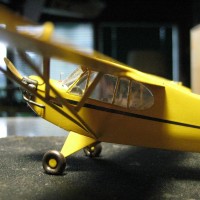
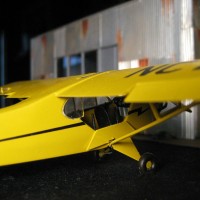
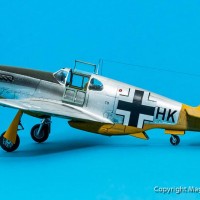
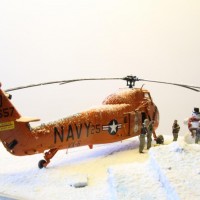


What more do you want? A lovely build, personal anecdotes from a flier/mechanic, a great story, and a bit of personal growth at the end.
Thanks, Señor Ley - an entertaining and instructional post.
‘Liked’
@flyingwrench
G, every time I see one of your articles, it brings back a bunch of memories. At lot of ranchers in West Texas had Cubs for putting around their properties, so the FBO in El Paso where I started out saw a lot of them. There's something magical about a 65hp Cub, just a simple airplane that to this day represents what flying should be. I progressed onto its big brother, the Super Cub, later on while working for the Border Patrol, which had a squadron of them equipped with military radios, a PA system and tundra tires so they could land on sandbars in the Rio Grande. A J-3 and a 450hp Stearman PT-17 remain the only airplanes I would ever consider owning if that was in my power to be. Needless to say, the computerized monstrosities I deal with now don't even come close to anything I consider aviation.
If you ever want to read some absolutely hysterical Cub stories, pick up the book "Moondog's Academy of the Air and Other Disasters" by Pete Fusco. It's worth the time and will have you rolling on the floor, especially if you happen to have gone through any of things described...
I no longer recognize what once might have been considered aviation. The technology is far beyond anything I ever worked with in the field and so much more like the IT work where I spent twenty years, almost double my time in aviation.
I wonder what happens when the panel goes dark and one is instantly transported back to the days of the early gliders. Only this glider weighs tons with hundreds of souls on board. Redundancy? Sure thing. Triple redundancy, naturally.
So what's to worry about? Nothing, I suppose and that's the problem. It's all by the book, all cut and dry, you're just the cog that helps it operate and it won't be long before A.I. replaces your cogsmanship.
As with so many other present day experiences, aviation is cookie cutter perfection. Advancing technology dried up whatever adventure, romance and uncertainty there was before it blew away in a supersonic slipstream. Thanks to cad and computer modeling, outside minor variations, all airplanes today look pretty much the same.
Unlike the days, when one could immediately tell the difference between a Ford Trimotor and a DC-2, today it’s hard to tell if it's a Boeing or an Airbus. Where there used to be a guy, or a couple of guys, with slide rules and limitless imagination, today its swarms of engineers designing different bits and pieces to specified standards. Wind tunnels? No doubt there is still an example of one in the Smithsonian.
A scene from Modern Aviation Design: “Look, right there on the screen, I wrote the code for that. That’s the operational procedure for the Flapdoodle’s emergency widget extender. It's my contribution to the unmanned, Flying Flapdoodle project. Being multitalented, I also designed some of the fasteners for the Flapdoodle.”
Outside of perhaps Burt Rutan, one doesn't see the innovation that came out of the age of one-man designs, like those of Clarence Kelly, Leroy Grumman, Walter Beech, or any of the other truly great aircraft designers.
Aviation has gone from Daniel Boone foraging across the unknown prairie to a delivery service around inner city ghettos.
Growing up I was dismayed to find out I missed those "golden days." Those days when one took off solo and was never heard from again. By the time I was born, the jet airplane and the nuclear bomb had radically changed, not just aviation, but the world.
Like Jimmy Stewart said in "Flight of the Phoenix. "I don't know, Lew, I suppose pilots are just as good now as they ever were...but they sure don't live the way we did. Well, I can tell you that there were times...when you took real pride in just getting there. Flying used to be fun.”
In those days, flying was the main event, the outcome of the flight was secondary.
People like Alberto Santos Dumont and Juan de la Cierva, dreamed of the day when the aircraft would augment, if not replace the automobile. Well now we have the worst of both worlds. Today, air travel isn't much different than bus travel with an elevated perspective for a much shorter time frame.
What I remember are the smells. The wet, musty smell of obsolete military aircraft with their heavy canvas interiors. The 5606 hydraulic fluid spilled or seeping from fittings, heavy weight oil, thick like molasses in the cold, and high octane fuel vapors. For me these odors, sweeter than any perfume, mixed together to bring back memories. The only thing I remember about jets is the smell of kerosene.
It's like current jets stepped out of a flight simulator that is now ironically a small refuge for pilots no longer able to afford the real thing. But even if it was affordable, government regulation has had a pronounced strangling effect on flying.
Waldo Pepper: "Are you gonna license the clouds and the rain? You gonna put highways in the sky for people to follow?"
Newton Potts: "Yep. All that, too. Along with airlines and airmail, and there's gonna be big money in it too, if you're smart."
Pepper: "Well, I'm no chauffeur, and I'm no mailman. I'm a flyer, Newt."
Potts: "I'm afraid not anymore, Waldo."
With all the incredibly intense government oversight and requirements in aviation, frankly I cannot imagine why anyone would want to pursue an aviation career today, especially as a pilot. And they won't be around much longer.
It really doesn’t matter because something is gone, something has been lost. Our thirst for adventure, our lust for life has been digitized, reduced to a point where we now actually feel our cog-like nature in the larger scheme of things. Bigger or smaller, cogs are replaceable. So where does that leave one's sense of personal identity or worth?
Once I might have thought differently, but the fact is in the bigger scheme of things, I wasn't worth much as a pilot or mechanic, but I didn't know it then. The movies had constructed an image of glory and worth in that profession. In the 1930s, pilots were heroes on a larger scale than modern sports or entertainment figures. Better yet, they always got the girl. In my mind, it was a goal worth attaining, never realizing the moment had passed before I was born.
Funny how other generations have seen things much the same way. In my old age, I find sympathy with the Luddites. I guess I’m an aviation Luddite. A Luddite that does not want to be replaced by A.I.. A Luddite who doesn’t want to see unmanned aircraft and vehicles or even walking, talking sexbots that do other things as well. As one wag put it, “what you should remember is that under all that silicone there’s a terminator.”
Luddites predicted a horrific future where machines would replace human labor eliminating their jobs. Apparently, they were just a little off on their timing. It sure looks like A.I. is going to make most of our efforts obsolete. The truth is, once released, the technology Genie can never be put back into the bottle.
The outcome on this looks great. I'll have to find me one just to put with my Corben Super Ace under the wing of my B-36! (Also their Ford Flivver if I ever find one!)
That's a good looking Cub Mr. Ley. In fact a model of a Cub was the first kit I build when I was about 6 years old. Couldn't tell you who made the kit as it was so long ago. And by the way you are a true word smith and I enjoy reading your prose.